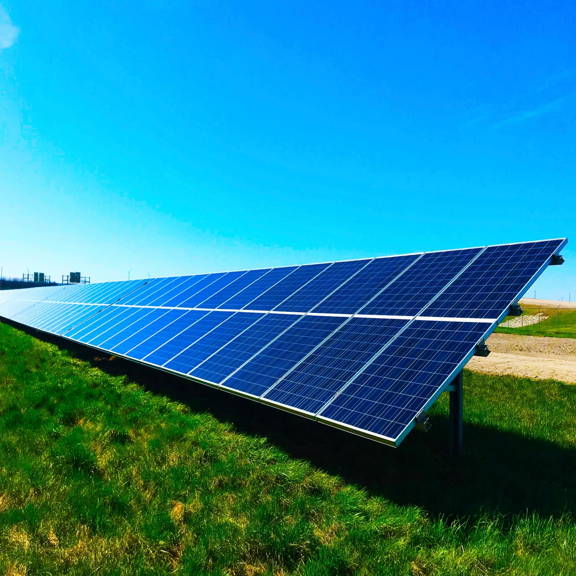April 29,2020
Why do solar panels look similar but the price is much different?
A solar panel collects sunlight and turns the radiations coming from the sun, directly or indirectly, into electricity with the help of photoelectric or photochemical effects. Solar cells are more energy-efficient and ecologically beneficial green products as compared to standard and rechargeable batteries.
Material classification
Currently, crystalline silicon materials (including polysilicon and monocrystalline silicon) are the most significant photovoltaic materials, with a market share of more than 90%, and will continue to be the mainstream of solar cell materials for a long time.
Monocrystalline silicon:
Monocrystalline silicon solar cells have a photoelectric conversion efficiency of around 18 percent, with the maximum reaching 24 percent. It is the highest photoelectric conversion efficiency of all types of solar cells, but the production costs are so high that it is not yet widely utilized. Monocrystalline silicon is sturdy and durable, with a service life of up to 25 years, thanks to its enclosure in tempered glass and waterproof resin.

Polycrystalline Silicon:
Although the manufacturing procedure for polycrystalline silicon - cells is identical to that for monocrystalline silicon solar cells, the photoelectric conversion efficiency of these silicon solar cells is considerably lower, at around 15%.
However, it is less expensive to produce than monocrystalline silicon solar cells, has easier-to-manufacture ingredients, uses less power, and has a lower overall manufacturing cost. Hence it has been created in significant quantities. Polycrystalline silicon solar cells also have a lower service life than monocrystalline silicon solar cells. Monocrystalline solar cells outperform polycrystalline solar cells in terms of performance to price.


Amorphous Silicon:
In 1976, amorphous silicon solar cells were introduced as a new form of thin-film solar cells. The production method is totally opposite to that of monocrystalline silicon and polycrystalline silicon solar cells; in fact, the process is quite simplified.
In this case, silicon material consumption is minimal, electricity consumption is relatively low, and its main advantage is its ability to generate electricity under low light conditions. However, the fundamental issue with amorphous silicon solar cells is their poor photoelectric conversion efficiency, which is around 10% at the globally advanced level, and it is not stable enough, with conversion efficiency continuously decaying over time.
Power Generation Principle

A solar cell is a device that collects and converts light energy into electricity. Materials capable of producing photovoltaic effects include monocrystalline silicon, polycrystalline silicon, amorphous silicon, gallium arsenide, indium copper selenide, etc. Their power generation principles are fundamentally similar.
Because their power generating principles are essentially the same, we shall use crystalline silicon to discuss the photovoltaic process. P-type crystalline silicon is loaded with phosphorus to produce N-type silicon, leading to the formation of a P-N junction.
When light shines on the solar cell's surface, a portion of the photons are absorbed by the silicon material; the energy of the photons is transferred to the silicon atoms, causing the electrons to leap and become free electrons, clustering on both sides of the P-N junction to form a potential difference.
When the external circuit is connected, a current flows through the external circuit due to the voltage, producing a certain output power. The conversion of photon energy into electrical energy is the core of this process.

There are two methods for generating solar power: The light-thermal-electricity conversion technique and the light-electricity direct conversion method.
1.
The light-thermal-electricity conversion process uses solar radiation created by thermal energy generation, which is normally absorbed by the solar collector and then drives the turbine to generate electricity. The former is known as the light-thermal conversion process, whereas the latter is known as the heat-electricity conversion process, which is the same as conventional thermal power generation.
Solar thermal power plants are highly efficient, but the present investment is hefty because they are still in the early stages of industrialization. A 1000MW solar thermal power plant costs somewhere between US$2 and US$2.5 billion, with 1kW costing between US$2,000 and US$2,500. As a result, the use of small-scale special events and large-scale usage in the economy is highly ineffective, and it cannot compete with conventional thermal or nuclear power plants.


2.
The direct conversion of light to electricity method is the utilization of the photoelectric effect, the direct conversion of solar radiation energy into electricity, and the fundamental device for light-electricity conversion is the solar cell. The solar cell has a photovoltaic effect caused by the direct conversion of solar energy into electrical devices. It is a semiconductor photodiode, so when sunlight shines on it, the photodiode converts the sun's light energy into electrical energy, creating a current.
When a large number of cells are linked in series or in parallel, they can form a solar cell array with reasonably high output power. Solar cells are a potential new form of power source that offer three primary benefits: durability, cleanliness, and adaptability. Solar cells can be invested in once and used for a long time as long as the sun exists; unlike thermal and nuclear power generation, solar cells do not pollute the environment; these cells can be used in small, medium, and large power plants, ranging from one million kilowatts to one solar cell group for one household only, which is incomparable to other power sources.

Power Generation Efficiency
Monocrystalline silicon solar energy has the highest photoelectric conversion efficiency out of all types of solar cells, reaching 24 percent. But, monocrystalline solar cells have such a high production cost that they are not yet often used.
Polycrystalline silicon solar cells are less expensive to manufacture than monocrystalline silicon solar cells, but their photoelectric conversion efficiency is substantially lower, and their service life is also shorter than monocrystalline silicon solar cells. As a result, monocrystalline solar cells are more cost-effective in terms of performance to price ratio.







